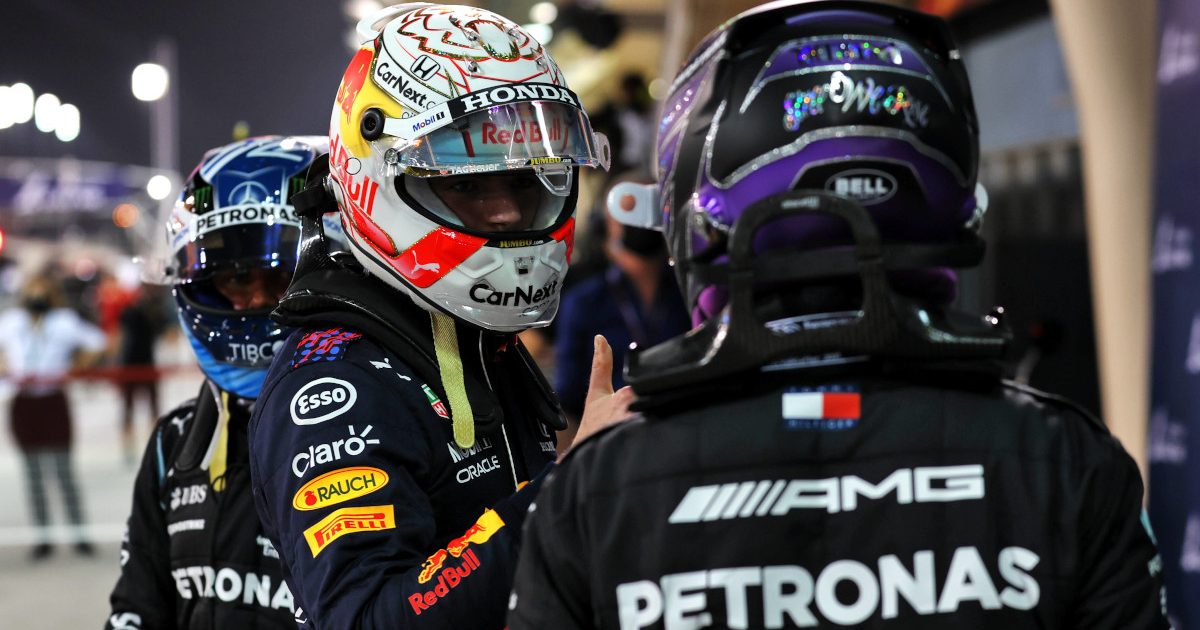At its heart Formula 1 is about gadgetry. The fastest car usually wins, not the quickest driver. But even now, when more than ever winning and losing comes down to minute mathematical increments of tiny technical tweaks, nothing still sells F1 like some good old-fashioned personal needle.
Lewis Hamilton and Max Verstappen don’t seem to like each other much. Competing for the world drivers’ championship means an edge in relations is inevitable. You don’t get to the top of a multi-billion euro sport and industry by not squaring shoulders against your closest rival. But this appears more than that.
A considerable whiff of “feeling” lingers from last month’s British Grand Prix when in the midst of a thrilling duel for the lead Verstappen decided to go for an ambitious lunge up Hamilton’s inner only to get the door firmly and spectacularly shut in his face. The Dutch prodigy ended up slamming into a tyre wall at high speed.
Verstappen and his Red Bull team cried foul. Hamilton shrugged a response that basically boiled down to “fortunes of war”. And overjoyed F1 bosses quietly hugged themselves at having a real grudge match on their hands. Not everyone gets motor-racing’s technical jargon. Anyone can get two guys who’ve got the hump with each other.
It’s no coincidence that F1 really catches the popular imagination when the whole bloated “Brmm Brmm” business gets boiled down to two people going toe to toe.
Devotees might be able to recall what horsepower was generated by the McLarens both Senna and Prost sat in back in the day. But no engineering qualifications were necessary to recognise a pair of competitors so maddened with fear the other might win that it felt reasonable to deliberately plough into them.
Schumacher did the same with Hill. Mansell and Piquet always looked on the verge of a punch-up. Hunt and Lauda actually got on pretty well but the clash of styles and personality was gold for a mass audience. Apparently Sebastian Vettel and Kimi Raikkonen are great mates too, bonding over an unlikely love of badminton. But no one ever makes movies about the admirably reasonable.
So as the Grand Prix circus resumes after a summer break in Belgium this Sunday it finds itself a lot more relevant to a lot more people. Even the most casual armchair viewers ghoulishly watching the start and the first corner for crashes are likely to pay attention for longer, which is gold for those flogging F1 through all sorts of media.
In many ways it’s a classic tale. Hamilton has been top dog for a long time. If he wins the drivers’ championship again this year it will a record eighth. He has already won more Grand Prix than anyone ever. Victory in Belgium will be a scarcely believable 100th race win. He is a statistical phenomenon in terms of pole positions and podium finishes, and might really be the best ever.
Verstappen is the young pretender, brash and full of a swagger that is perhaps inevitable when you’re 23, unfamiliar with financial pressure, and assured of never wanting for company. Just the thought of Hamilton in the mirror was enough for other drivers to fold; Verstappen is cocksure enough to assume the chequered flag is unfurled just for him.
Since Silverstone he has pointedly referenced Hamilton’s supposed celebrity lifestyle, saying he would never hang out with people just for his profile. Instead he painted himself as a much more down to earth figure, one that perhaps his 1.9 million Twitter followers can relate to more readily than a sometimes painfully earnest world champion reportedly worth over €300 million.
Except this is no straightforward story of some young rebel taking on the establishment figure. Verstappen is from a racing family. His father is an ex-F1 driver. Once Verstappen Jnr started showing talent in karting there was little difficulty in presenting the peak of the sport as an attainable goal.
It is in stark contrast with Hamilton’s unlikely and pioneering rise to stardom from an under-privileged background in England and becoming the first black driver in F1.
Crucially, though, and unlike golf with its coldly cynical Player Impact Programme for boosting publicity through social media, there doesn’t appear to be anything ersatz about Hamilton versus Verstappen. It’s no Ali-Frazier rivalry. But there’s enough differences between the two men to make it both believable and box office.
That’s good news for F1. Halfway through the season, and with as many as a dozen races still to go, the potential exists for a championship duel to rank with any that have gone before. Hamilton has a tiny eight-point lead – basically a single sixth-place finish – that is principally a result of that already notorious Silverstone shunt. So Verstappen is essentially level and armed with a grudge.
Vital to everything is the unlikely coincidence of the two best drivers ending up in two cars that appear to be as quick as each other.
Motor-racing wonks have been contemplating whether a budget cap introduced this year due to the pandemic has left teams relying on their 2020 cars and so inadvertently provoked a competitive beano between Mercedes and Red Bull. Technological development is in many ways the point of F1. It’s ironic then that hitting the brakes on that could pay off in increased public interest.
Considering the budget cap for teams on the grid means they have “only” $150 million each to spend there’s no escaping the sport’s overwhelming corporate nature. So any future new normal will still be principally about the science and engineering necessary for making one car go faster than the rest.
But there’s a certain reassurance in how all the high-tech bells and whistles still can’t provoke public curiosity quite like a lightning fast feud.






